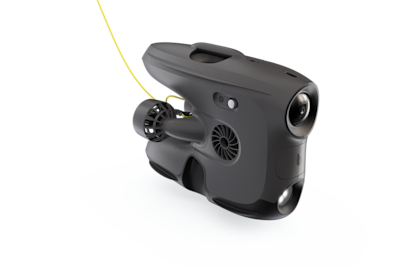Dam inspections
Frictionless access to dam structures and pipes
Explore products Talk to an ROV expertPerform your own assessments
Waterworks play an important role in society as they maintain and distribute drinking water to the public. Making sure there are no cracks in the dam foundations, unwanted items dumped in the water or damage to the pipelines are just three areas of maintenance to follow up on a regular basis.
Work smarter with drones
No need for ROV pilots
Equip your team with tools to perform the inspections themselves. Expand their capabilities and utilize their expertise and knowledge.
Quick deployment
Deploy within minutes and perform your inspections efficiently to optimize your resources.
Digital workflow
Get clear visuals and vital data directly to your device. Share findings with colleagues and upload to your reporting system. Streamline the inspection process.
Webinar - INSPECTING INFRASTRUCTURES AND WATER RESERVOIRS
Provisioning of water supply is an essential task for public utilities. Learn how underwater drones can inspect water pipes in drinking water, wastewater reservoirs and other infrastructure.
Blueye Explains / Episode 31
Pipeline inspections
Content creator Sigrid Walseth explains pipeline inspections with ROVs
See all episodesSupport
Receive quick support from our engineers who built the underwater drones. Customers rate, on average, the support they get from us to a 93% satisfaction score.
Read moreHelp Center
Find loads of articles and videos on utilizing and maintaining the underwater drone on our Help Center and Youtube channel.
Browse our Help CenterA tool you can trust - always
Robust and user friendly techonology with documented results within a range of industries.
Read more“
We use the underwater drone to assess the state of the soldering, weights and mountings on the pipelines. We're also able to drive the drone inside the pipe to inspect fouling and errors.
- Drone operator, Trondheim Bydrift

Custom Package
The Blueye X3 ROV package
As inspections or underwater operations demand different setups, we encourage you to get in touch with us to help you with a customized package that suits your needs.
Based on feedback from our users we recommend professional customers to include their Blueye X3 order with an aluminum Zarges case, reel with 150 meter tether, Blueye High Capacity battery and Rugged controller. However, you are free to equip you ROV as you see fit for your usecase. We offer equipment from a wide range of suppliers, and other necessary ROV parts such as tethers come in different lengths.
The Blueye X3 ROV can be equipped with a variety of sensors, manipulators, sonars, and positioning systems.
The price for a recommended kit starts at $30,788 ex.VAT
Request a quote
Get the latest user stories and updates from us!
Newsletter sign-up
Talk to an ROV expert
If you have any questions, please do not hesitate to reach out directly!

Start a conversation
Ask for a local representative
We have world wide presence through our Blueye Partners.

